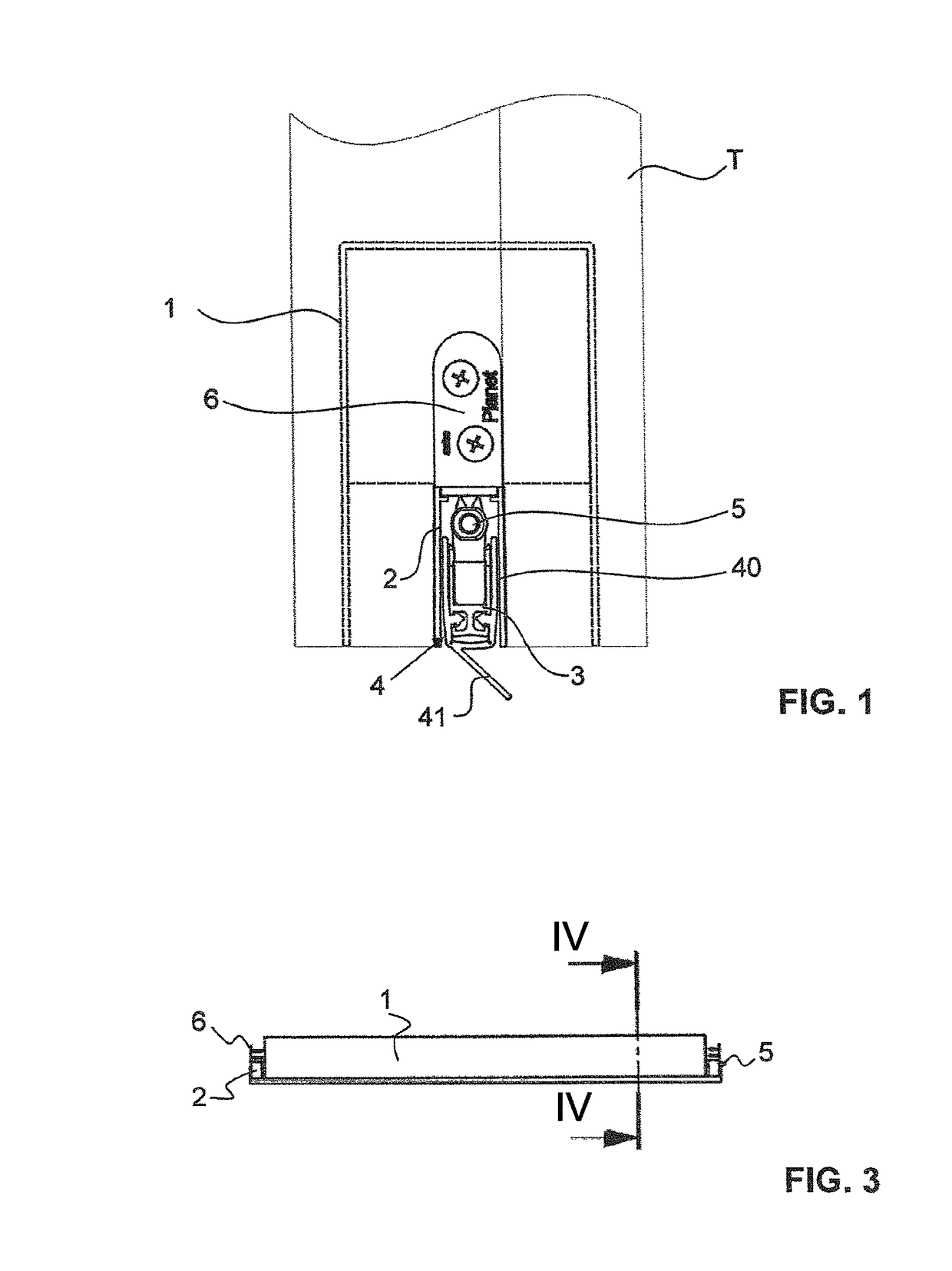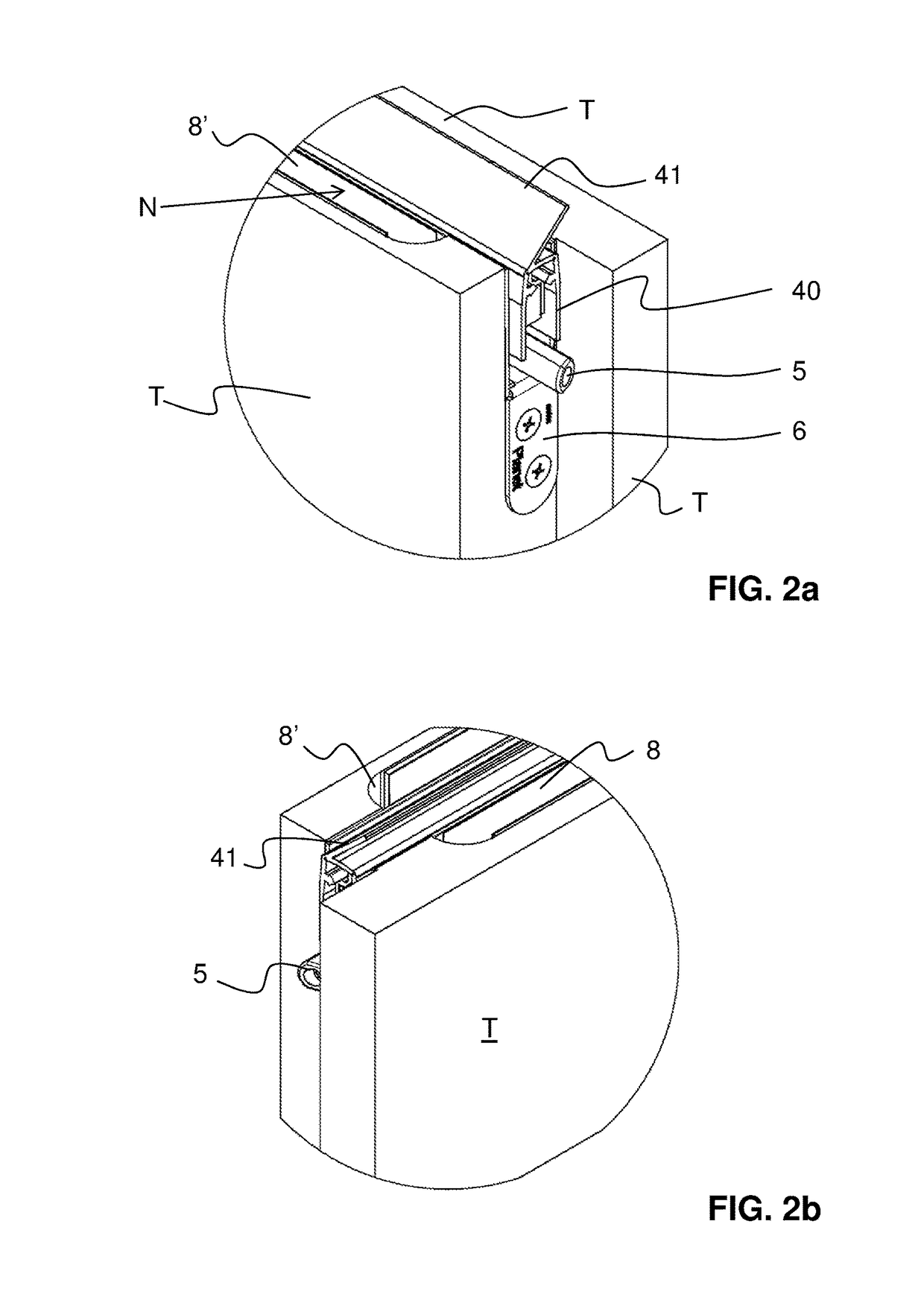Door sealing system
a sealing system and door technology, applied in the field of door sealing systems, can solve the problems of insufficient pressure equalizing openings for appropriate ventilation of rooms, inability to use seals in low- or zero-energy houses with controlled ventilation, and insufficient sound protection and light glimmers in one room, etc., to achieve the effect of increasing the renewal of air
- Summary
- Abstract
- Description
- Claims
- Application Information
AI Technical Summary
Benefits of technology
Problems solved by technology
Method used
Image
Examples
Embodiment Construction
[0047]FIGS. 1 to 6 illustrate a first exemplary embodiment of the door sealing system according to the invention.
[0048]According to FIG. 1, said door sealing system is fastened in a groove N which is present in a lower edge of a door wing T. The door sealing system can alternatively also be arranged on an upper end edge, on a lateral surface of the door wing T or on a lower or upper end surface of the door wing T.
[0049]As can be seen in FIGS. 2a and 2b, the U-shaped groove N is of stepped or offset design. At at least one, preferably at both lateral ends of the groove N, the latter is designed to be narrower and less deep than in the central region. However, the groove N can also have a width and depth which are constant over its entire length.
[0050]The door sealing system is fastened to or in the door wing T by known means. In particular, there can be an outer housing 1 which receives all of the parts of the door sealing system and is of cap-shaped design with limbs parallel to the...
PUM
 Login to View More
Login to View More Abstract
Description
Claims
Application Information
 Login to View More
Login to View More - R&D
- Intellectual Property
- Life Sciences
- Materials
- Tech Scout
- Unparalleled Data Quality
- Higher Quality Content
- 60% Fewer Hallucinations
Browse by: Latest US Patents, China's latest patents, Technical Efficacy Thesaurus, Application Domain, Technology Topic, Popular Technical Reports.
© 2025 PatSnap. All rights reserved.Legal|Privacy policy|Modern Slavery Act Transparency Statement|Sitemap|About US| Contact US: help@patsnap.com



